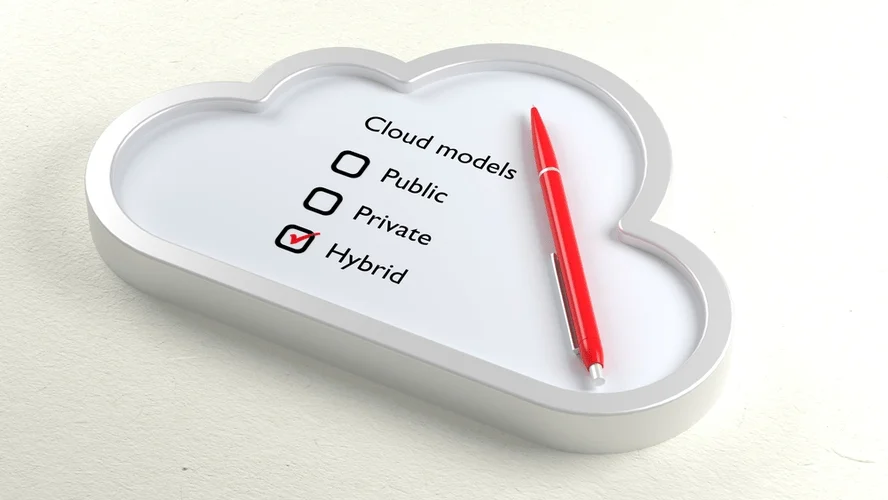The advantages of going cloud-native are specific and could be judged on a case-by-case or application-by-application basis. There are not any readymade checklists that you must use, but instead, resolve what is best for you based on the trade-offs you are prepared to adjust to. It may help handle the elevated complexity of communication between providers by providing options corresponding to load balancing, service discovery, and site visitors management.

The Ultimate Word Devops Roadmap For 2025: A Step-by-step Information To Mastering Devops

Build resiliency into cloud native functions by adding redundancy to the design. Cloud native purposes avoid single points of failure by using clusters of self-contained instances, data replication, and multi-AZ or multi-region cloud deployments. Purposes that must run on-premises should use hybrid architectures to leverage the general public cloud for high availability and catastrophe recovery, a minimal of for some of their parts. In this dynamic world where first-mover advantage grace startups and enterprises, there is no time for slowness in any section of software program growth. Speed triumphs over something, and cloud-native development allow us to deliver just that. In addition, DevOps can release software utilizing automation and even automate some phases of development corresponding to testing and deployment by leveraging the cloud.
- In addition, the pliability the cloud offers builders to drastically change the software at hand with a lot predictability and confidence.
- UST consultants reimagine cloud technique, governance models, cybersecurity, and application growth to take full benefit of the cloud.
- When purposes are scheduled to run on a selected cloud platform for many years, you will get your funding back.
- These databases are purpose-built for dynamic cloud environments, providing features like auto-scaling and automated backups.
- Developers could add functions with ease because of this packaging technique.
- These users want better experiences and new methods to deal with their listing of calls for.
Challenges Of A Cloud Native Structure
This simplification reduces the time your IT group must spend on maintenance and frees them as a lot as focus on more useful tasks. Connect with considered one of our AWS consultants to begin constructing a strategy that aligns with your business targets. Microservices structure breaks purposes into small, independent companies that focus on specific capabilities for the application.
In distinction to traditional monolithic functions, cloud-native purposes are constructed using a number of, independent microservices which are deployed in cloud environments. A DevOps method combines software growth and IT operations groups to enhance automation and frequent iteration around the software supply process. Some practices DevOps teams could employ embrace continuous integration and continuous delivery (CI/D), and infrastructure as code (IaC). Whereas there are not any hard-and-fast guidelines for cloud native structure, most cloud native functions are organized as microservices. Microservices are used to interrupt up purposes into autonomous, loosely-coupled models that can be maintained by small groups.
When architecting a cloud native application, you must plan for a system that is constantly on the transfer in several dimensions. Cloud native systems dynamically scale out, mechanically handle failure and make it as easy and possible to add and take away elements. Right Here are a number of rules that may make your architecture stronger, more adaptable to alter and extra simply maintainable. Safety is an integral aspect of cloud infrastructure because of the decentralized structure and constant information sharing amongst completely different companies and between the organization and the person. This creates potential safety breach points that require strong security measures to safeguard cloud-based assets, functions, and information. As functions turn out to be more complicated to meet evolving consumer expectations, a cloud-native strategy makes it simpler to respond quickly to new tendencies and altering markets.
They are elastic and can deal with varying masses effectively to optimise useful resource usage and price. Relating To automation, Cloud Native additionally means the complete utility lifecycle. Assume about creating steady integration (CI), steady improvement (CD) pipelines, GitOps workflows, auto-scaling and self-healing methods. This enables constant and scalable infrastructure deployments across environments. This means we should always create code and infrastructure to automate and handle using software instruments easily so we are in a position to provision sources quick and constantly across the infrastructure. In a Cloud Native Structure, we see microservices (loosely coupled light-weight services) that break down applications into smaller, independent and deployable companies.
For occasion, if a particular microservice experiences a surge in demand, solely that specific element needs to be scaled somewhat than the entire software. Furthermore, this precept promotes polyglot programming, which permits builders to use different units of programming languages and technologies primarily based on their particular requirements. In contrast, Cloud Native structure breaks the application into independent, loosely coupled microservices that may be developed, deployed and scaled independently. This modularity allows for more flexibility, as groups can replace or scale individual companies independently. Transitioning to cloud-native app growth increases efficiencies, but it also introduces new limitations. Addressing challenges such as legacy processes, abilities gaps, lack of automation, and system integration issues is essential to getting the total ai trust advantages of secure cloud adoption.
Taking into consideration all the benefits of cloud-native improvement, itis high time to suppose of embracing a new way of designing and constructing yourapps. No doubt, it is better to start an improve with a dependable vendor’sguidance. Sensible Playing Cards determined to implement a reliablecloud solution as a part of its digital transition journey. The project introduced a Frenchsoftware and hi-tech production company 80,000 EUR of savings. Using serverless platforms does notrequire configuring on-premises networking, planning for storage, andprovisioning cloud cases.

These containers can be orchestrated to dynamically handle the sources in an optimal way. The functions are typically segmented into microservices, significantly rising their maintainability and overall agility. As cloud-native utility architecture frees builders from configuring, patching, and sustaining working systems, it saves time to concentrate on product growth. In other words, a cloud-native utility structure enables builders to make use of an working system as a platform for abstracting away from underlying infrastructure dependencies.
The reason https://www.globalcloudteam.com/ for this transition is because of the complexity and incompetence of the traditional IT Environments. Industries have applied this Cloud-Native method because it essentially simplified the app development process. Their success was augmented by their capacity to control the flexibleness of the cloud by redirecting app development into cloud-native environments. They are continuously evolving and driven by innovation and the want to maximize the potential of cloud applied sciences. Several key trends are shaping the future of cloud-native architectures, inspiring businesses to suppose forward and embrace the possibilities. Most integration platforms require specialized skillsets and long, expensive implementations.
This makes for simple scalability.Cloud-native functions use features and APIs so as to make efficient use of the underlying assets. This reveals up as better efficiency at lower costs.Cloud-native purposes price less to run and are more efficient. Service suppliers work on a month-to-month charge in accordance with the resources that you use. So you pay only as much as you employ, and this results in soa vs microservices savings as overheads are decrease.
